- remind me tomorrow
- remind me next week
- never remind me
The X Button
Life During Wartime
by Todd Ciolek,

This month is so stacked with major releases that I almost missed the first of them: Mega Man 10. It came out for the Wii this Monday, and it'll hit the Playstation 3 on March 11 and the Xbox 360 on March 31. I presume that many have already grabbed it, and for those people I have a question: which robot master's stage did you try first?
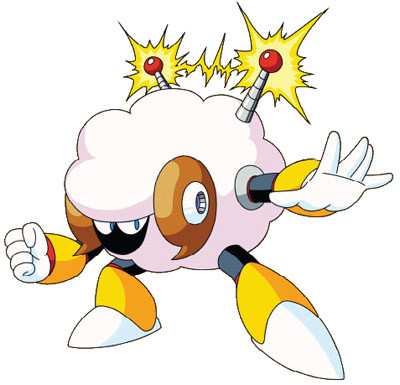
Yes, all of you tried Sheep Man's level. It's far too tempting to choose the most novel or ridiculous boss in a Mega Man game, and I'm sure a lot of players initially went to Splash Woman's stage in Mega Man 9, just to see the first female boss in the franchise's history. I also remember picking Yamato Man's level back in Mega Man 6, just because I had no idea what a “Yamato” was.
I'll review Mega Man 10 soon, though I wonder if the game's $10 price tag makes opinions redundant. Traditional Mega Man games tend to be competent even at their worst, and the bland slogs of Mega Man 4 through 8 would be worth picking up for ten dollars brand new. Not that any of this will keep me from spouting off about the game.
NEWS
METROID: OTHER M SHAKES UP SAMUS
Plenty of Nintendo-related news came from a press summit that showed off much of the company's 2010 lineup for North America. And I think Metroid: Other M, developed by Team Ninja and longtime Metroid producer Yoshio Sakamoto, got most of the attention. It's technically a 3-D game, but it plays with all sorts of perspectives. Samus Aran runs through corridors and caverns in 3-D environments, but pointing the Wii remote at the screen shifts to a first-person perspective, not unlike the Metroid Prime games. Other areas introduce explorative over-the-shoulder viewpoints, and the game adopts wall-jumping, health-recharging, and other ideas from Super Metroid.
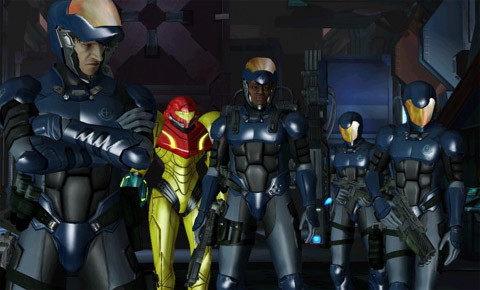
More surprising is Other M's attempt at fleshing out Samus and the universe around her. Other Metroids are light on story, conveying it through gameplay and imagery, and even the talkative Metroid Fusion featured only Samus and her computerized friend Adam Malkovich. Other M is different: it spins a story around Samus directly after the depressing finale of Super Metroid (and thus before the events of Fusion). Still a bounty hunter, she runs into a Galactic Federation unit of space marines, and her former commanding officer Adam Malkovich is somehow involved. They join her in exploring a besieged space station, even though Samus is considered a bit of a maverick. Not least of all for wearing her yellow-and-red armor into battle.
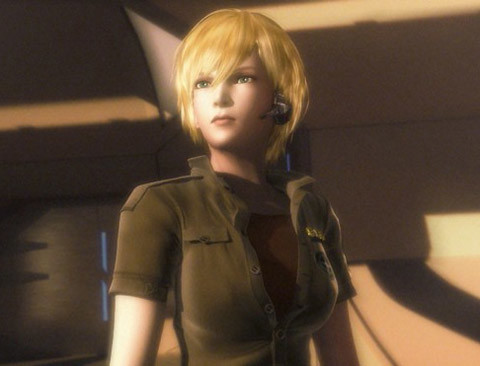
It's a risky attempt at giving Metroid a complex narrative, and it's bound to alienate fans who prefer the limited hints that previous games offered about Samus. In Other M, she's stepping into a role like her most obvious inspiration, Ripley from the Alien films. This brings all sorts of new problems, including the prospect of bad voice acting. Still, it's time that Metroid made this leap. It's the only major Nintendo property tied to a consistent plot, and it can't stick with limited storytelling forever. We'll find out just what sort of history Samus has when the game ships in June, though a new trailer gives a few hints.
SUPER MARIO GALAXY 2 ADDS YOSHI
Another highlight of Nintendo's extravaganza was Super Mario Galaxy 2. While some have pegged it as Super Mario Galaxy: The Leftovers, Nintendo's extra ideas from the first game are anything but lazy. Galaxy 2 uses the same planet-hopping 3-D gameplay as before, but it expands on the variety of worlds Mario visits. New sights include a vertical tree stage, a level where Mario rides precariously atop walls, and a return of the giant-scale world from Super Mario Bros. 3. Wasn't that just the best level in the game? Didn't you stop there even if you were using the warp whistles to get to World 8? I did.
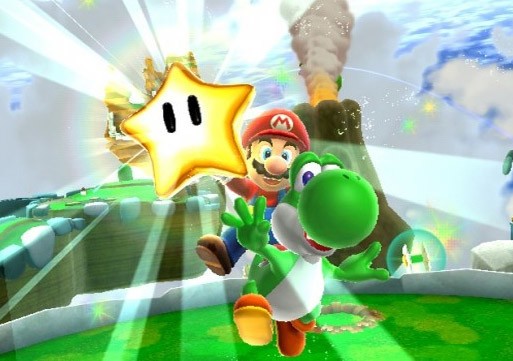
Mario gets a drill power-up in Galaxy 2, but the best new addition is Yoshi, the green dinosaur of indeterminate species. When carrying Mario, he can devour and regurgitate enemies like he usually does, and special power-ups let him race to great heights or inflate like a slow-rising balloon. Super Mario Galaxy 2 is out this May.
NINTENDO ALSO HAS SIN, PUNISHMENT, DRAGON QUEST
Nintendo also nailed down a release date for Treasure's Sin and Punishment 2. It's called Sin and Punishment: Star Successor in North America, and it'll fight Metroid: Other M for shelf space in June. It hasn't changed much from its Japanese incarnation, which amazed a lot of the people who imported it last year. Sin and Punishment: Star Successor is, like its Nintendo 64 predecessor, a gallery-style shooter where a gun-toting kid runs in the foreground while Treasure's designers throw all sorts of insane things toward the screen.
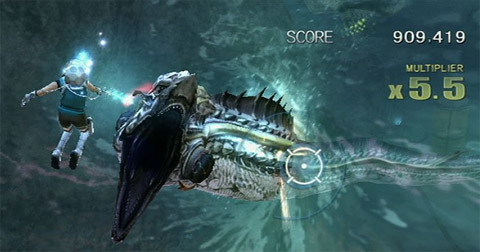
Of the major Wii releases this year, Sin and Punishment: Star Successor runs the greatest chance of being overlooked, so I hope it's bought by everyone who enjoys a hectic, skillful action game where you constantly dodge certain destruction.
Lastly, Nintendo announced plans for publishing Dragon Quest IX here in a partnership with Square Enix. The game arrives for the DS this summer, and it'll retain its subtitle of Sentinels of the Starry Skies. As a Dragon Quest titles that invites players to trade items and information when their DS systems are in range of each other, IX proved a success in Japan's crowded subways and social venues. Granted, some players complained about the game's tanned ko-gal fairy, but Japanese gamers have griped a lot about trivial things lately.
GUWANGE ON XBOX LIVE, BUT PROBABLY NOT HERE
Xbox Live Arcade has seen a lot of older shooters revived, but Guwange might be the most obscure one yet announced. It's an on-foot action game where players gun down all manner of hideous demons, like Pocky and Rocky in a feudal Japanese hellscape. Cave created it back when they were just starting out in the mid-1990s, and it's not terrible well known outside of hardcore shooter-fan circles.
Of course, the real news here is that Cave's willing to port over their old shooters, which would include titles like Progear no Arashi and Dangun Feveron. The real prize in their back catalog is ESP Ra.De, which I'd call one of the best shooters ever. Guwange hits Xbox Live Arcade this year in Japan, and I hope an English version will follow.
PREVIEW: SAKURA WARS: SO LONG, MY LOVE
The Sakura Wars series was once perfect proof that Japan's gaming market was radically different from North America's. In Japan, players thronged around a line of strategy-RPGs with a 1920s setting and copious character interaction. In North America, only a fringe of dedicated fans would want such a thing. So it went for years after the 1996 debut of Sakura Wars, with even ardent RPG experts admitting that there was no chance of U.S publishers translating a niche title so heavy on text, voice acting, and anime overtures. Then things changed. In the past few years, Americans started buying RPGs with dating-simulator elements, from the cult hit Persona titles to Mana Khemia and Ar Tonelico. And just when Sakura Wars was fading in popularity in Japan, NIS America brought Sakura Wars V over here.
Why Sakura Wars V? Well, it's the most recent main Sakura Wars, and it's set in America; New York, to be precise. Sakura Wars: So Long, My Love, as it's known in North America, also doesn't demand much knowledge of the previous titles, though it opens with Japanese naval ensign Shinjiro Taiga meeting with series heroine Sakura Shinguji and hero Ichiro Ogami (in a Disney-like arrangement, Shinjiro is actually Ogami's nephew). Since this is an alternate version of the 1920s, Japan's military is battling a race of otherworldly creatures instead of brutally subjugating other countries, and Shinjiro is dispatched to join the New York Combat Revue. Like the casts of the first four Sakura Wars games, the New York branch sends transforming steam-powered mecha into battle, and all of the pilots are also actresses at the troupe's theatrical base of operations, the Little Lip Theater.
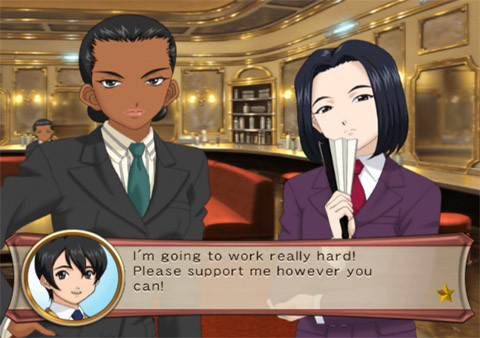
That name should be warning enough to anyone who cringes at overtly anime-influenced RPGs. If the high-school drama of Persona 4 left you embarrassed, Sakura Wars: So Long, My Love will send you shrieking into the street. The series is often described as a mix of dating simulator and strategy-RPG, though it goes well beyond the usual static, pandering stuff of dating sims. It comes closer to an actual anime series in RPG form, with its own story arcs, next-episode previews, and silly, silly melodrama. Of course, it's still driven by conversations with a cast that's mostly women, and Shinjiro can play the flirt as much as the player wants.
And it's the cast that really drives a genre hybrid like this. Introduced to a combat team that was really expecting his more experienced uncle, Shinjiro is initially patronized by his commanders, the vaguely troubled blonde Rachet Altair and the eccentric Mr. Sunnyside. The rest of the team welcomes him in varying ways: Japanese fan-wielder Subaru Kujo is aloof, sickly Diana Caprice is politely supportive, lawyer Cheiron Archer shoves Shinjiro around at every opportunity, café-running hostess Cherry Crocker teases him, and the shy Japanese-American clerk Anri Yoshino seems afraid of him (as though she thinks she's in a much more adult sort of adventure game). Naturally, Shinjiro proves himself by the end of the game's first episode, emerging in command of a bunch of more qualified pilots.
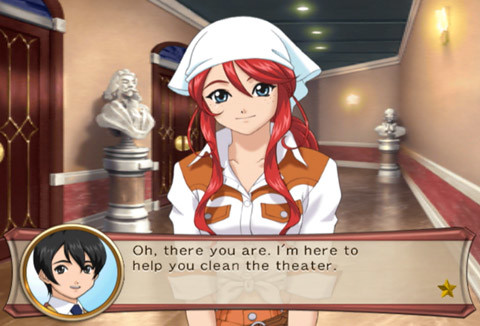
Yet it's samurai cowgirl Gemini Sunrise who carries the game from the start. The obvious main character, she's an endearing example of the cultural mishmash that makes Sakura Wars so guiltily fun. As the first friend Shinjiro makes in the city, she's a whirl of cornball talents and country-girl enthusiasm. This is a game for modern anime fans, however, and so Gemini is also sometimes clumsy and dependent on our hero. Still, she's the most likeable character in the bunch, and it's hard to see any other cast member being the right match for Shinjiro.
Of course, Sakura Wars: So Long, My Love lets the player build a relationship with any of the game's six principal mecha pilots, including an apparently platonic one with underage gunfighter Rosarita Aries. Conversations are guided by Shinjiro's player-chosen responses, with the selections being distant, friendly, or crude. Players can also gauge just how forcefully Shinjiro speaks, and that also affects how other characters see him. Forge stable bonds with his fellow pilots, and they'll all improve in battle. To the game's credit, Shinjiro isn't a complete blank for players to control. While his dialogue is rarely voiced, the script tries to define him as an earnest kid out to prove himself, with his minor personality quirks left up to the player.
Sakura Wars: So Long, My Love also offers the chance to see 1920s America through the deliberately skewed perspectives of series creator Hiroi Ohji and writer Satoru Akahori (who's done some of his best work on Sakura Wars, though that's not saying too much). While not as hilariously warped as the America of Ohji's Tengai Makyo IV, Sakura Wars: So Long, My Love shows a New York that never quite was, and it's fun to see just how it defies history or, in rarer cases, stays true to it. There's a weird appeal to the whole thing, like a Prohibition-era Phoenix Wright game where the legal battles and item searches are less frequent and the innuendo is mostly heterosexual.
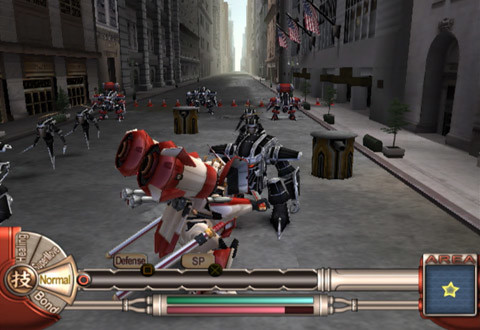
There's a strategy-RPG in the middle of all of this, too. The original Sakura Wars was a basic affair, but So Long, My Love loses the grids of the older games in favor of a battlefield where 1920s steam-mecha roam freely. It's still a broadly painted combat system: an energy meter governs movement and actions, though it allows players plenty of chances to take back their decisions. Characters use special attacks based on the specific weapons they wield, and team-up moves require two party members to corner an enemy inside their shared range. It's hardly competition for the latest tactical RPG or real-time strategy title, but it's solid enough. And Sakura Wars: So Long, My Love lets characters transform their robot armor and fight aerial battles. Let's see Final Fantasy Tactics do that.
NIS America rolled out a Sakura Wars: So Long, My Love trailer draped in corny faux-Texan narration last year, causing some fans to vow they'd switch the game over to its Japanese language track. Yet the localization seems an excellent fit for the absurdity of stage actresses piloting Model-T robots through Manhattan. Gemini's voice isn't quite as overblown as it is in the trailer, but it's still peppered with old-fashioned twang and played to amusing extremes by her actress (who seems to be Laura Bailey). The rest of the voices heard in the first few hours past muster, though Cheiron's actress seems to have trouble with a character who's constantly pissed off. At any rate, there'll be a Japanese track in the PlayStation 2 version, with the Wii version featuring only the English voices.
There's another troubling question: will Sakura Wars: So Long, My Love find an audience? It's several years old, and its approach to relationship-based gameplay lags behind the detail and restraint of Persona 3 and 4. Moreover, it's arriving in a month with at least two high-profile console RPGs. Yet there's really nothing like the Sakura Wars brand of alternate history and operatic drama, and it's acutely tailored for the anime-fan crowd. If nothing else, Sakura Wars: So Long, My Love will end the PlayStation 2's lifespan on a stylish note.
RELEASES FOR THE WEEK OF 3-7
BLAZBLUE: CALAMITY TRIGGER Developer: Arc System Works
Developer: Arc System Works Publisher: Aksys Games Platform: PSP Players: 1-2 MSRP: $29.99 First things first: this isn't the new version of Blazblue. That's Continuum Shift, and it'll be out in North America later this year. This is just a PSP port of the original BlazBlue, though it's not completely reused material. There's a new mode called “Legion” where players navigate a map, fight teams of enemies, and build an army from defeated foes (which, sadly, don't include any cameos from the Guilty Gear games). The game's hyper-flashy look was scaled down for the PSP, resulting in lower-resolution visuals that…well, they don't look all that great. BlazBlue's appeal relies heavily on the visual punch of, say, a superhero ninja slamming into a gothic vampire's electric cat-chairs, so the game might lose something. Still, the gameplay's intact, or at least as intact as it can be with the PSP's control pad. And hey, it's an achievement to put this on the PSP at all, right?
|
CALLING Developer: Hudson
Developer: Hudson Publisher: Hudson Platform: Wii Players: 1 MSRP: $39.99 Still mad over Fatal Frame IV: Mask of the Lunar Eclipse not getting a North American release? Even more mad over Ju-On: The Grudge: Haunted House Simulator being a poor substitute? Well, there's always Calling, Hudson's Wii-based tribute to the J-horror film genre. Seemingly inspired by the film Kairo (or Pulse), Calling shows a cursed website's effects on several playable characters, each of whom pokes around various buildings and uncovers clues regarding the site's victims. The Wii remote functions as a flashlight and a cell phone, with ominous calls coming from the controller's little speaker. The game relies on the same gloomy, sudden-scare style as many j-horror films, so it might not suit those who aren't frightened by a glare from a ghostly schoolgirl. Then again, what doesn't work in a movie sometimes works in a game, and preview videos show that Calling might work just as well as the Fatal Frame titles.
|
FINAL FANTASY XIII Developer: Square
Developer: Square Publisher: Square Enix Platform: PlayStation 3/Xbox 360 Players: 1 MSRP: $59.99 Oh yeah, this thing. As commonplace as it is to see Final Fantasy on a game cover today, it's still a major event when a properly numbered Final Fantasy arrives, giving fans around the globe reasons to hate it. Each new Final Fantasy enrages about half of its potential fan base, though Final Fantasy XIII does its best to capture the same glowing, anime-sci-fi fusion as Final Fantasy X (while straying from the subdued, sepia-toned realm of Final Fantasy XII). Its world is an exotic fantasy spread run by bizarre deities, and this apparently worries the residents of a floating city so much that they hunt down residents who are marked to serve those deities. Caught up in this war between humans and gods are the ex-military heroine Lightning, the somewhat douchey rebel leader Snow, halfway orphaned kid Hope (yes, Hope), outcast teenager Vanille, coolly efficient warrior Yun Fang, and easygoing marksman Sazh. Oh, and the baby Chocobo living in Sazh's afro. It's all in the mold of belt-covered, neon-glowing future pulp established by Final Fantasy artist Tetsuya Nomura, though the game's battle system goes in a new direction. Players can arrange multiple commands for characters to unleash all in one go, and the entire flow of battle depends on the lead character, whose death ends the game instantly. There's a lot to anger the more sensitive fans, but it's still a Final Fantasy through and through.
|
YAKUZA 3 Developer: Sega
Developer: SegaPublisher: Sega Platform: PlayStation 3 Players: 1 MSRP: $54.99 One might feel bad for portraying Sega as a company that's failed constantly since 1993, but this Yakuza 3 mess really plays up that angle. After playing a frustrating will-we-or-won't-we game with the North American version of Yakuza 3, Sega finally announced it and then scheduled it for the first week of March, when Final Fantasy XIII will overshadow just about everything. Of course, Yakuza fans would still buy it without complaint, but Sega then decided to excise at least two of the game's diversions: visiting hostess clubs and answering Japanese history questions. Mini-games are really half the fun of Yakuza, in which a gold-hearted mobster named Kiryu explores everything the sordid underworld has to offer. The history games are perhaps inessential and would require a lot of translation work or rewriting, but the same can't be said for the hostess sections, in which Kiryu drinks and chats with club women who aren't necessarily just pretending to like him. They were minor distractions, but they were fun pieces of the street-tough lifestyle in Yakuza and Yakuza 2. That aside, Yakuza 3 retains a lot of what made the first two games enjoyable: a mixture of fairly in-depth street brawling and gritty crime drama, though the hardened Kiryu is running an orphanage this time around.
|
Also This Week: Resident Evil 5 Gold Edition arrives on the Xbox 360 and PlayStation 3 with its extra chapters and costumes, while the collected Sam and Max 2: Beyond Time and Space comes to the Wii.
EXTRA LIVES: GAMES THAT SHOULD BE ANIME
Anime based on video games tends to circle the bottom of the industry's barrel of quality, alongside forgotten toy-driven shows and Gundoh Musashi, but perhaps we shouldn't write off the whole game-to-anime path entirely. After all, the problem often lies in anime studios letting inexperienced directors adapt games that had intensely clichéd or non-existent stories in the first place. That creates nothing good, but there are, in fact, plenty of games that would work well in animated form. Well, OK, there are at least three of them.
GUILTY GEAR
The 1990s gave us all sorts of completely awful anime series based on fighting games, so making another one seems a really, really bad idea. Guilty Gear, however, is one of a handful of fighters imagined well enough to support more than the usual hey-let's-fight plot of a video game. The franchise's world is a post-apocalyptic carnival of strange technology and magic, where a woman's hair can be a weapon, an assassin can wield a demonic pool cue, and a freakish, Evangelion-like cyborg can be the mother of a race of rebel machines.
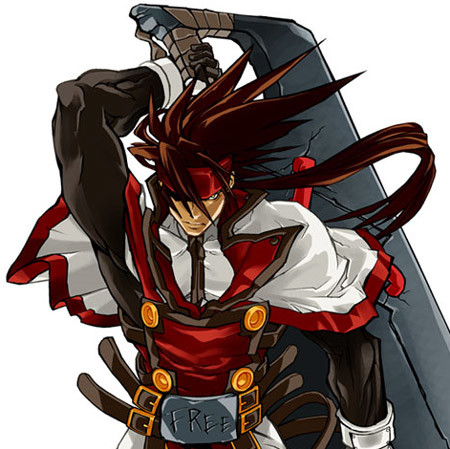
A Guilty Gear anime would be problematic in story, since there are many characters and not a lot of plot threads to draw them all together. It would almost be better to approach the whole thing as a series of brief videos devoted to each fighter, with all the money dumped into spectacularly animated battles. In other words, it'd be an expanded version of the only Guilty Gear anime that exists: a five-minute clip made for Guilty Gear X. Just get better voice acting.
How It Should Go: An anthology of short films, with a different director helming each character piece. Of course, this would require some talented anime auteurs to like Guilty Gear. I'm sure Koji Morimoto is a big Sol Badguy fan.
RING OF RED
 Ring of Red is often tough to enjoy as a game: battles can last for two hours of primitive combat mecha lumbering around while low-level soldiers and medics die screaming deaths below. Yet it's an interesting stage for an alternate-history where World War II saw Japan divided between American forces and filthy Commies. Two decades after this, a pilot named Masami von Weizegger faces conspiracies and the threat of all-out warfare.
Ring of Red is often tough to enjoy as a game: battles can last for two hours of primitive combat mecha lumbering around while low-level soldiers and medics die screaming deaths below. Yet it's an interesting stage for an alternate-history where World War II saw Japan divided between American forces and filthy Commies. Two decades after this, a pilot named Masami von Weizegger faces conspiracies and the threat of all-out warfare.
The story itself needs refinement, but Ring of Red makes unique use of combat mecha in a 1960s stage. There's potential for all sorts of political and social interplay straight out of Mamoru Oshii's Kerberos films, even if anime directors normally use alternate history to show Japan as a blameless victim. I'd take that chance just to see Ring of Red become a political drama with realistic mecha and characters. It'd fare better than Code Geass, at any rate.
How It Should Go: Ring of Red needs a tightly written 13-episode TV series with a good budget and no cheap CG for the mecha. Oshii probably wouldn't direct it, but down-to-earth robot shows are Ryosuke Takahashi's bread and butter.
VAGRANT STORY
 In between directing Final Fantasy Tactics and half-directing Final Fantasy XII, Yasumi Matsuno created an action-RPG that some billed as a medieval-fantasy Metal Gear Solid. The setup is similar: a cult led by the metal-armed Sydney Losstarot takes over a duke's manor, and a royal agent named Ashley Riot heads in to investigate. Ashley eventually tracks Sydney and his followers to the decaying city of Lea Monde, where all sorts of shocking revelations await. That aside, Vagrant Story's approach to plot is the polar opposite of Metal Gear Solid's long-winded melodrama. Told with brief, well-localized dialogue, Vagrant Story is no less interesting in its tale of a man's disturbing self-discovery on a stage of corrupt nobles and fanatics.
In between directing Final Fantasy Tactics and half-directing Final Fantasy XII, Yasumi Matsuno created an action-RPG that some billed as a medieval-fantasy Metal Gear Solid. The setup is similar: a cult led by the metal-armed Sydney Losstarot takes over a duke's manor, and a royal agent named Ashley Riot heads in to investigate. Ashley eventually tracks Sydney and his followers to the decaying city of Lea Monde, where all sorts of shocking revelations await. That aside, Vagrant Story's approach to plot is the polar opposite of Metal Gear Solid's long-winded melodrama. Told with brief, well-localized dialogue, Vagrant Story is no less interesting in its tale of a man's disturbing self-discovery on a stage of corrupt nobles and fanatics.
Some players are put off by Vagrant Story's combat, which emphasizes customizing weapons and exploiting enemy weaknesses. That's all more reason to turn the game into something easier to approach. Its look and storytelling are closer to European-influenced fantasy than the anime stylings of many Japanese RPGs, and an animated adaptation would be a novel sight.
How It Should Go: Vagrant Story's plot could be distilled into a two-hour film without losing much, and only a movie would have the budget to recreate the game's stunning scenery. This will never happen, of course, as publisher Square and Matsuno have parted ways.
discuss this in the forum (47 posts) |
this article has been modified since it was originally posted; see change history